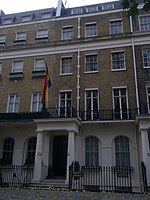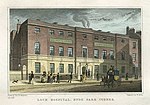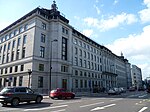St Peter's Church, Eaton Square
19th-century Church of England church buildingsAnglo-Catholic church buildings in the City of WestminsterBelgraviaChurch of England church buildings in the City of WestminsterChurches completed in 1827 ... and 14 more
Churches completed in 1837Churches completed in 1875Churches completed in 1991Commissioners' church buildingsDiocese of LondonGeorgian architecture in the City of WestminsterGrade II* listed churches in the City of WestminsterGreek Revival church buildings in the United KingdomNeoclassical architecture in LondonNeoclassical church buildings in EnglandPages containing links to subscription-only contentRebuilt churches in the United KingdomReligious buildings and structures in the United Kingdom destroyed by arsonUse British English from February 2015

St. Peter's Church, Eaton Square, is a Church of England parish church at the east end of Eaton Square, Belgravia, London. It is a neoclassical building designed by the architect Henry Hakewill with a hexastyle portico with Ionic columns and a clock tower. On 19 October 1991 The Times newspaper wrote "St Peter’s must now rank as one of the most beautiful churches in London". It is a Grade II* listed building.
Excerpt from the Wikipedia article St Peter's Church, Eaton Square (License: CC BY-SA 3.0, Authors, Images).St Peter's Church, Eaton Square
Hobart Place, London Belgravia
Geographical coordinates (GPS) Address External links Nearby Places Show on map
Geographical coordinates (GPS)
| Latitude | Longitude |
|---|---|
| N 51.4978 ° | E -0.1493 ° |
Address
Church of Saint Peter (St Peter's)
Hobart Place
SW1W 0HU London, Belgravia
England, United Kingdom
Open on Google Maps










